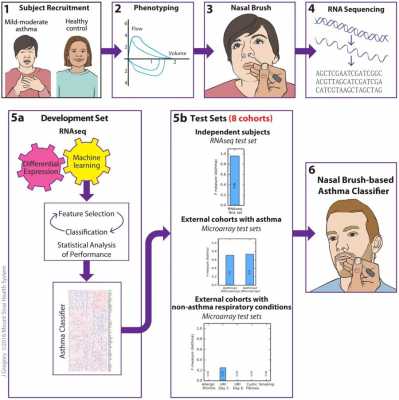MedicalResearch.com interview with:
Dr. Chase Spurlock, PhD
CEO, IQuity, Specialty Diagnostic Technologies
Faculty, Vanderbilt University Medical Center
Dr. Spurlock discusses IQuity's release of IsolateFibromyalgia, the first RNA-based blood test to detect fibromyalgia.
MedicalResearch.com: What is the background for this test? Would you briefly explain what fibromyalgia is, whom it affects and why it has been difficult to definitely diagnosis?
Dr. Spurlock: We developed the Isolate
Fibromyalgia™ test using our established RNA assay platform, IQ
Isolate™, to help clinicians receive timely and accurate information. This technology has evolved from over a decade of research at Vanderbilt University and continues at IQuity funded by both the National Institutes of Health (NIH) as well as private investors. We discovered that differences in RNA expression patterns could be detected in patients with a variety of human conditions spanning infection to more complex inflammatory diseases. With our focus on autoimmune disease, we identified and validated RNAs capable of distinguishing multiple sclerosis, IBS, Crohn’s, ulcerative colitis and fibromyalgia syndrome. In the case of fibromyalgia, our research involved almost 600 subjects including healthy individuals, patients with endocrine conditions, dermatologic conditions and rheumatologic diseases — rheumatoid arthritis, Sjogren’s syndrome and systemic lupus erythematosus. Reported sensitivity and specificity of this assay is 92 percent and 96 percent, respectively.
Fibromyalgia syndrome is characterized by widespread musculoskeletal pain often initially localized to the neck and shoulders. Patients typically describe pain throughout the muscles but may also report pain in the joints. Furthermore, fibromyalgia is usually accompanied by fatigue as well as cognitive disturbance. Patients most afflicted are women between ages 20 and 55. Fibromyalgia affects approximately as many as 6-10 million people in the U.S.
The difficulty in reaching a definitive diagnosis lies in two important issues. First, the cause of the syndrome is unknown, and the way the condition presents and progresses can vary among patients. Secondarily, fibromyalgia syndrome mimics many other conditions due to the multiple nonspecific symptoms associated with fibromyalgia. Patients look well, there are no obvious abnormalities on physical examination other than tenderness, and laboratory and radiologic studies are normal. With no discernable abnormalities in routine clinical laboratory testing or imaging, the diagnosis is based on subjective reporting of symptoms.
The difficulties and complex nature of receiving a correct fibromyalgia diagnosis are apparent. Despite improved awareness among primary care clinicians, many continue to be uncomfortable with making this diagnosis. Fibromyalgia patients on average wait almost a year after experiencing symptoms before seeing a physician and end up visiting on average 3.7 different physicians before a diagnosis. The diagnostic journey can take years. Isolate
Fibromyalgia provides the clinician and patient actionable information with 94 percent accuracy.
(more…)





